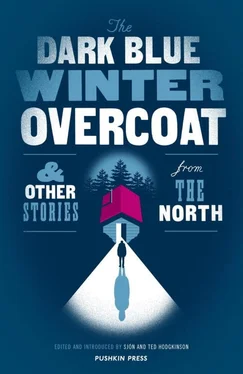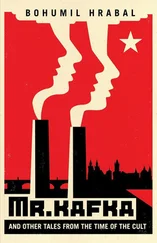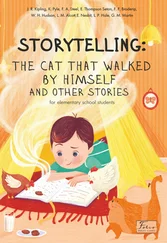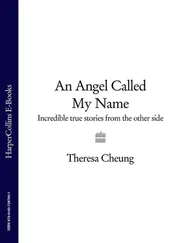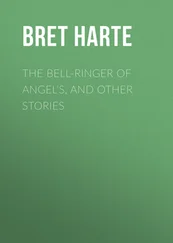Then Jo sees a long cortège approaching in the distant. It can only be the king. Jo has never laid hands on an instrument, but he’s heard “God Save the King”. He picks up the two planks and starts banging them to the beat of the song so hard that the sound echoes throughout the parish. He keeps on doing this until the king’s cortège has passed and is out of sight. Then Jo walks down from the hill. Whether the Swedish king ever understood the tribute, nobody really knows.
NOTE 6
There’s an inherited pride in not buying new stuff, but rather making what you need out of what you already have. Here we call it making one’s own patent.
NOTE 7
Any car has potential value. Enough organ donors could in the end become a product. The organ-donor hoods remain lying around in the field encircling the house. No need to remove them, he says, they shimmer so nicely in the sun.
NOTE 10
His parents buy him new trainers while on holiday in Sweden. The shoes are blue and yellow. Among the kids in the village they are quickly nicknamed “the Swedish shoes”. The Swedish shoes are made from a stiff, synthetic material that proves unsuitable for soccer. To shoot the ball is impossible, it’s too painful. He can only lob it. In the course of that autumn and the following summer, until he finally grows out of the Swedish shoes, he develops a sophisticated lobbing technique. There is no situation he cannot lob his way out of. For all time he is the one who’s lobbed the highest penalty on the calves’ grazing field.
NOTE 12
Recipe for a boat trailer:
Buy a 30–40-year-old caravan.
Slash it all to smithereens with a chainsaw.
Dump everything apart from the undercarriage behind the barn.
NOTE 13
Greetings from the neighbour: Nothing colours the September sky like the sound of a chainsaw eating away at fibreglass and aluminium.
NOTE 14
The dead are here. With no drama, no conundrum, without being anything out of the ordinary, they are here.
NOTE 17
The floor of the community hall is about to cave in during the New Year’s party. He’s on the committee. Like all the others he’s drunk out of his mind. He sees only two possible solutions to the problem.
Option 1: Tell the villagers to stop jumping to the beat.
Option 2: Phone his grandfather in the middle of the night and tell him to get over there with some building materials quick as hell so they can emergency-reinforce the floor foundation.
He chooses option 2.
NOTE 19
Down by a place where two rivers meet there is a meadow. If the time is right, he who passes here will hear infants crying. These are the unwanted newborns, left here to die by a desperate father or mother. Every seventh year these children return to the place where they were abandoned.
We call them eahpádusak , human apocrypha trapped between existing and never having existed. That is why they return. That is why they cry. Only by performing an ancient baptizing ritual may all be alleviated. Only then will it all be over.
NOTE 21
“I wash the dishes the Saami way,” he says.
“How so?” says the anthropologist.
“It’s in the wrist,” he says. “But for people who are not so familiar with Saami culture it might seem like I do it exactly the same way as everyone else.”
NOTE 23
My coffin is slender, skinned trunks of willow, tightly bound.
My coffin is old postal bags, split and sewn to a snug cocoon.
My coffin is nightfall and the following day.
My coffin is the particularly roomy ski-box I got so cheaply in Sweden.
My coffin is a boat, with no sail, no oars, and the sky open above me.
My coffin is the wind, and entrusted men carry me onto the mount.
NOTE 24
Much later they arrived at a place. They viewed the land.
“This looks rather OK,” he says.
“Yeah,” she says.
“We’ll settle here,” he says.
“Yeah,” she says.
TRANSLATED BY THE AUTHOR
Originally from Greenland, NAJA MARIE AIDT is a Danish poet and author with twenty-seven works in various genres to her name. She has received numerous honours, including the Danish Critics’ Prize and the Nordic nations’ most prestigious literary prize, the Nordic Council’s Literature Prize, in 2008 for Baboon , and her work has been translated into ten languages. Her work has also been anthologized in the Best European Fiction series and has appeared in leading American journals. Baboon was published in the USA by Two Lines Press in 2014. Denise Newman won the PEN Translation Prize for her translation of Baboon in 2015. Naja Marie Aidt’s first novel, Rock, Paper, Scissors, was published in August 2015 by Open Letter Books. She lives in Brooklyn, New York.
KJELL ASKILDSEN (born 1929 in Mandal, Norway) is one of the great Norwegian writers of the post-war era and a major figure in contemporary Scandinavian literature. Since his debut in 1953 he has published seven acclaimed short-story collections, as well as five novels. His latest book, the short-story collection The Cost of Friendship , was published in 2015. Askildsen has won the Swedish Academy’s Nordic Prize, the national Brage Prize and the Norwegian Critics’ Prize twice. His short stories have been translated into twenty-nine languages.
JOHAN BARGUM (born in 1943 in Helsinki, Finland) is a writer and director. He writes Swedish, Finland’s second official language and had his first book, a collection of short stories ( Swartvitt , “Black and white”) published in 1965. He has mostly written short stories, but has also published novels and plays, some thirty works altogether. Films and television plays based on his work have been produced in Finland and Sweden, and his prose has been translated into several West and East European languages. His play Are There Tigers in the Congo ? has been translated into more than twenty languages. Bargum has received many awards, among them the Pro Finlandia medal in 1996 and has been active in the cultural field as chairman of several organizations including the Finland-Swedish Authors Union. He is married, with two daughters and four grandchildren.
GUÐBERGUR BERGSSON (born in 1932 in Grindavik, Iceland) published his modernist novel Tómas Jónsson metsölubók in 1966 (“Tómas Jónsson Bestseller”), a cultural breakthrough in Icelandic literature. His novel Svanurinn (1991) ( The Swan ) secured his position as a major European novelist. Bergsson’s books have been translated into many languages. He is also a prolific translator of world literature and has enriched Icelandic literature and culture with timeless masterpieces by Spanish, Portuguese and Latin American writers, including Cervantes’s Don Quixote . He has been the recipient of several major prizes, including the Nordic Prize of the Swedish Academy in 2004. In 2010, he was awarded the Spanish Royal Cross (Orden de Merito civil).
HASSAN BLASIM was born in Baghdad in 1973, where he studied at the city’s Academy of Cinematic Arts. In 1998, he was advised to leave Baghdad, as his documentary critiques of life under Saddam Hussein had put him at risk. He fled to Sulaymaniya (Iraqi Kurdistan), where he continued to make films, including the feature-length drama Wounded Camera , under the Kurdish pseudonym “Ouazad Osman”. In 2004, after years of travelling illegally through Europe as a refugee, he finally settled in Finland. His first story to appear in print was for Comma’s anthology Madinah (2008), edited by Joumana Haddad, which was followed by two commissioned collections, The Madman of Freedom Square (2009) and The Iraqi Christ (2013)—all translated into English by Jonathan Wright. The latter collection won the 2014 Independent Foreign Fiction Prize, and Hassan’s stories have now been published in over twenty languages.
Читать дальше
